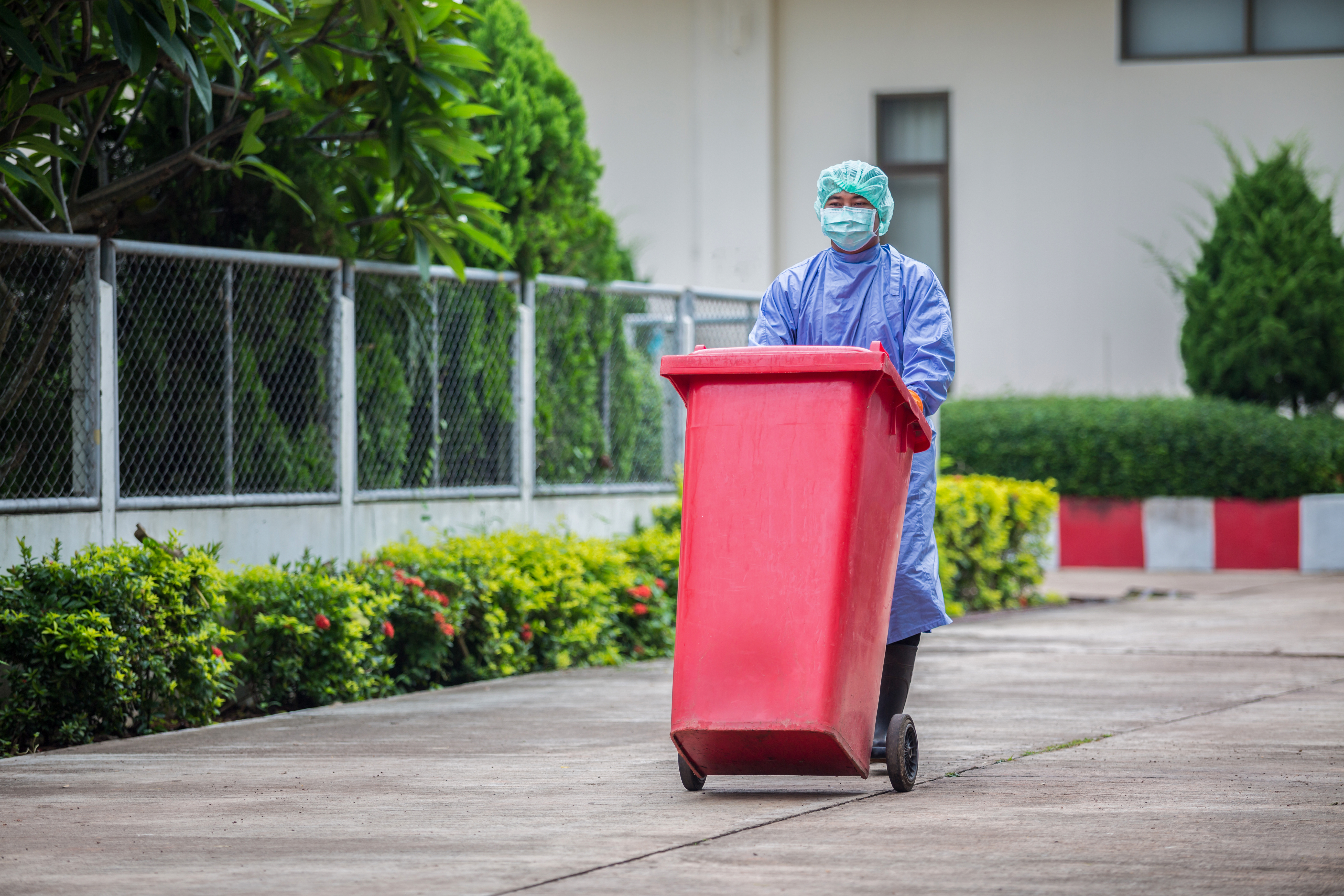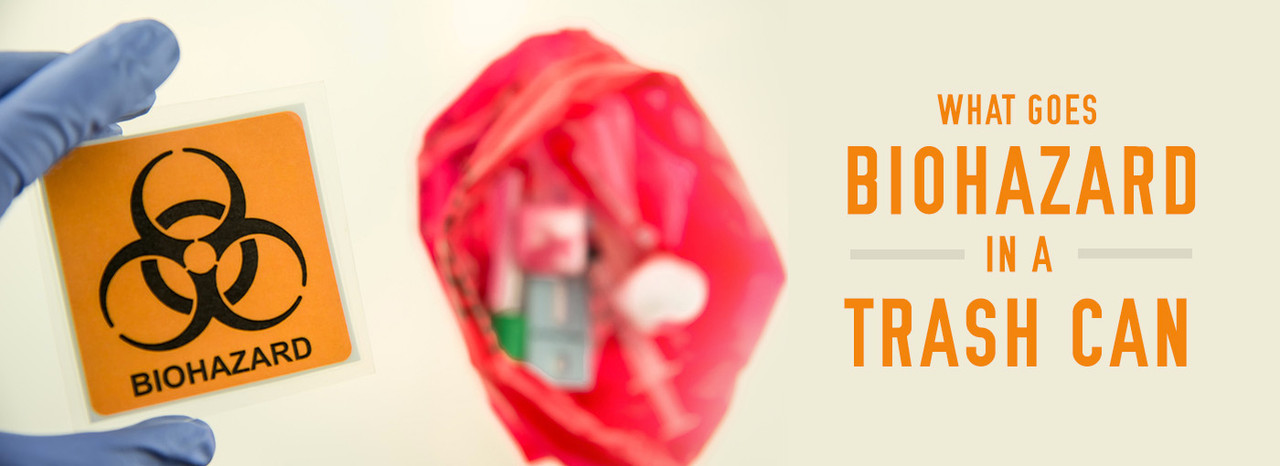Years ago, medical waste was collected from doctors’ offices and hospitals and disposed of in landfills just like regular trash. We now know that this type of medical waste is a biohazard that can put individuals and the environment at harm if not handled properly, and regulations are in place to ensure that medical waste is collected, treated, and disposed of properly.
What is Biohazard Waste?
When you think of biohazard waste, you probably think of things like needles or other medical supplies that have come into contact with blood. However, even something as simple as a tongue depressor that has come into contact with a patient’s saliva is considered a biohazard.
In general, biohazardous waste is any biological waste that could be potentially infectious, and this typically means when bodily fluids are involved. This type of waste is often found in medical settings, but other industries deal with dangerous waste as well. From working on a bloody crime scene to cleaning up an industrial accident to disposing of the refuse from a scientific lab, people deal with biohazard waste in a number of settings.
Examples
Some examples of waste that is considered to be a biohazard are:
- Blood: Human blood is the most common example of biohazardous waste, and this category includes any blood products like serum or plasma. Even dried blood is considered to be biohazard waste.
- Bodily fluids: In addition to blood, any fluid that comes from a human body is potentially infectious and is classified as a biohazard. From something as simple as saliva to cerebral spinal fluid and everything in between, human bodily fluids must be disposed of properly and safely.
- Microbiological waste: Most lab work yields biohazardous waste. Serums and cultures and the devices used to transfer, mix, and store them are all potentially infectious.
- Pathological waste: Any type of human body part, tissues, or organs that need to be thrown out are biohazardous. This includes even the smallest pieces of waste from procedures like biopsies, and it also includes organs and tissues from the deceased (autopsies).
- Animal waste: It’s not just human waste that’s a biohazard. Any animal known to be infected with a pathogenic microorganism that can be infectious to humans must be disposed of as biohazardous waste. In addition to the animal’s carcass or body parts, any bedding or material the animal was in contact with must be disposed of properly.
- Sharps waste: Sharp items such as needles, glass pipettes, razor blades and scalpels, broken glass, and splintered plastic must be disposed of in a special bin to prevent potential injury.
What Isn’t Biohazard Waste?
Businesses often misunderstand what actually qualifies as biohazard waste, and they throw things away in their biohazard trash cans that don’t really need to be there. Protective medical gear like gloves, masks, and gowns do not have to be disposed of in special biohazard cans unless they were in contact with blood or other infectious material. In addition, bandages and gauze—even when opened—can be thrown in the regular trash as long as they were not used.
In many cases, hospitals and doctors’ offices end up with regular trash hogging space in their biohazard trash cans because employees are not properly educated on what qualifies as biohazardous waste, or they’re simply a bit lax about using the proper waste bins.
What Are the Dangers of Biohazard Waste?
The primary concern with biohazard waste is the spreading of infectious disease. If biohazardous waste is not disposed of correctly, it can easily lead to the spread of a variety of diseases. From individuals coming into direct contact with the waste if it’s not thrown out in a special biohazard trash can to the waste accumulating in landfills and impacting other organisms in the area, there are a number of risks—particularly for those in the medical and janitorial/refuse fields.
How Do You Properly Dispose of Biohazard Waste?

In the past, biohazard waste was mostly incinerated, but as of 1997, the Environmental Protection Agency put regulations into place because of their concerns with the emissions from this process, which they believed could lead to harmful air quality with a negative impact on human health.
Today, infectious waste goes through a sterilization process, usually with an autoclave. An autoclave uses high pressure and temperature to sterilize items; the heat is so intense that no bacteria or viruses can survive. Once biohazardous waste has been through this process, it can be disposed of safely or recycled. Some items, like plastics, are melted down after the sterilization process and made into new products.
The Cost of Medical Waste Disposal
It’s not cheap to dispose of medical waste properly. In 2012, the United States spent around $2.5 billion in biohazardous waste disposal, and the market is projected to hit $3.2 billion in 2017. In the U.S. alone, hospitals dispose of 5.9 million tons of waste each year. With so much biohazardous waste that needs to be disposed of, it is extremely important that it’s being done properly.
Find the Right Bin for Biohazardous Materials
The correct disposal of biohazardous waste is pivotal. The amount of this waste is increasing every year, and it can pose significant risk if not handled the right way. Properly disposing of biohazardous waste can be as simple as outfitting your business with the right receptacles (biohazard cans are typically red and are often marked with a biohazard label) and training your staff on what is considered to be infectious or dangerous trash.
It’s not just hospitals that create this kind of waste; many businesses can and do find themselves with biohazardous waste on their hands, and disposing of it in the correct type of biohazard trash can is crucial.

